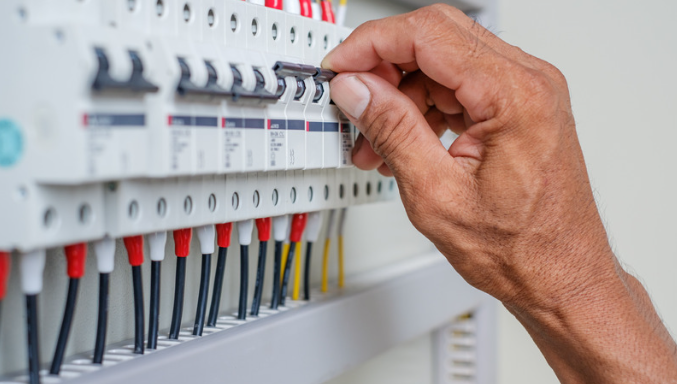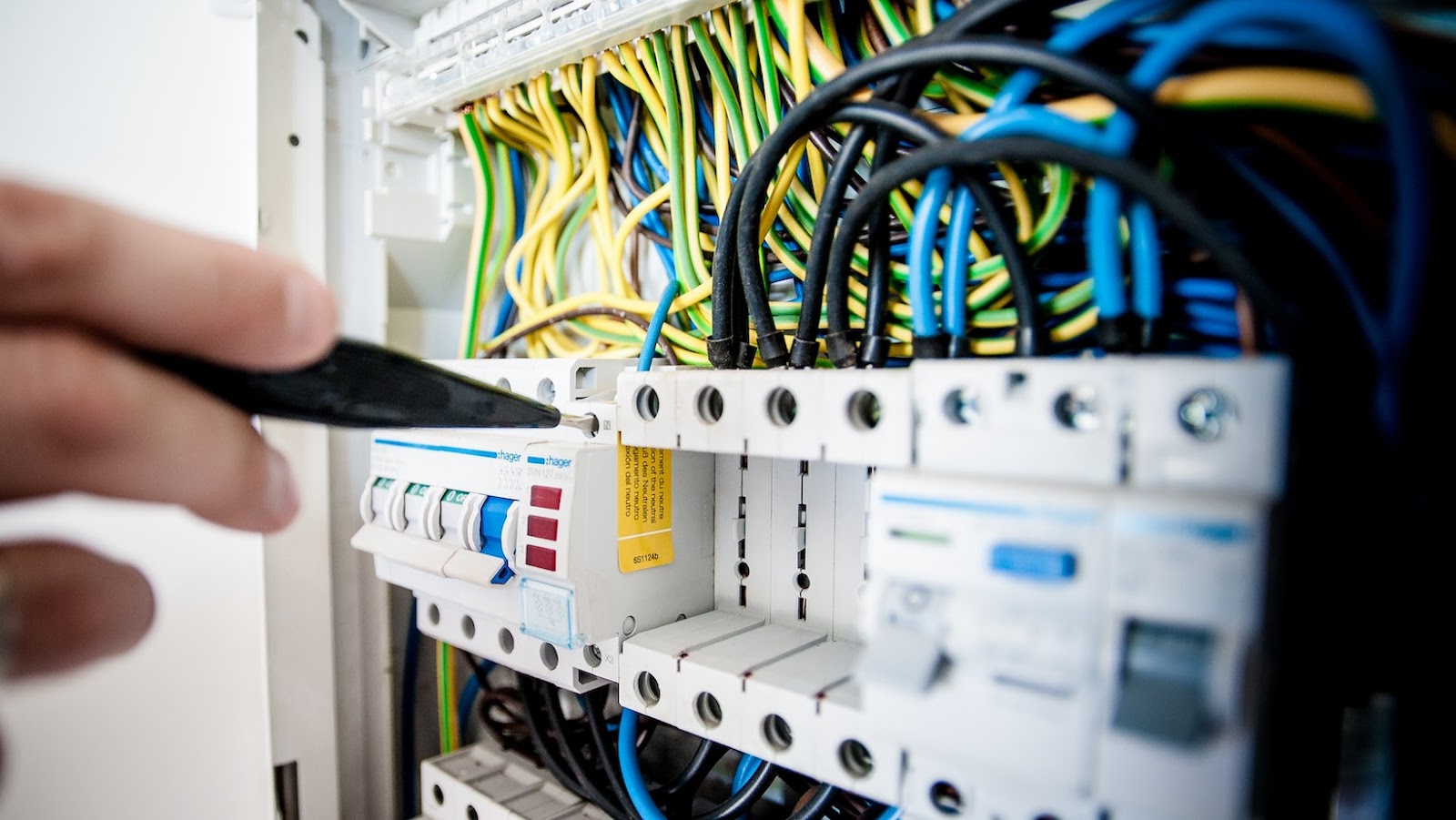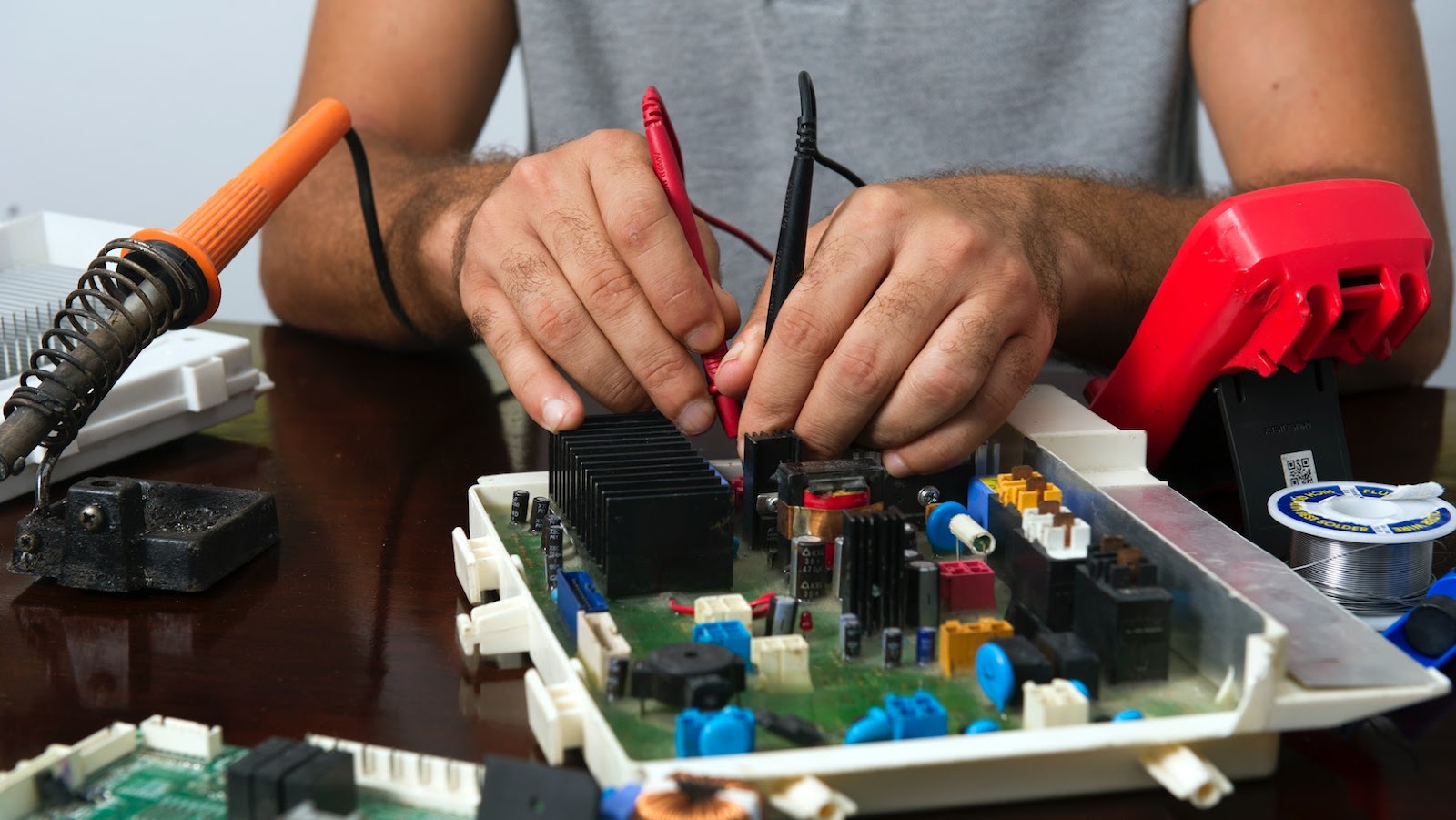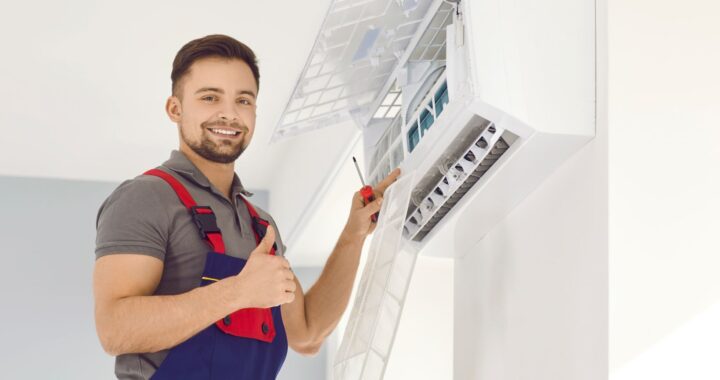How Does A Main Circuit Breaker Panel Work?

The Main Circuit Breaker Panel: An Overview
In new houses that have a slab, the main circuit breaker panel is typically installed in a location outside the house, such as a garage, shed, or carport. The main circuit breaker panel is responsible for controlling the flow of electricity throughout the entire house. It serves as a safety measure in the event of any electrical problems that may arise.
Let’s take a closer look at how the main circuit breaker panel works.
A circuit breaker panel, also known as the electrical panel or breaker box, is the main point of distribution for electricity in a commercial or residential building.
Understanding the Basics of a Circuit Breaker Panel
A circuit breaker panel, also known as the electrical panel or breaker box, is the main point of distribution for electricity in a commercial or residential building. The main circuit breaker panel is usually located in a utility room, garage, or basement, and it is designed to protect the building’s electrical system from overload and electrical fires. It contains a variety of circuit breakers that connect to different electrical circuits throughout the building.
When an electrical overload occurs, the circuit breaker will trip, shutting off power to that circuit and preventing further damage or hazards. In new houses built on a slab, the main circuit breaker panel is usually installed on an interior wall or in a closet near the front of the house for easy access by the utility company. Knowing the basics of a circuit breaker panel is essential for anyone who wants to work with electricity safely and efficiently.
Components of a Main Circuit Breaker Panel
The main circuit breaker panel is the central distribution point of electrical circuitry for a building. It acts as a switchboard for all the electrical lines entering a property and controls the distribution of power to different parts of the building. Typically located near the utility meter, the main circuit breaker panel is usually installed in a utility closet or garage where it is easily accessible. The components of a main circuit breaker panel include:
- Main breaker switch: This switch disconnects the entire panel and is utilized during maintenance or in case of an emergency.
- Circuit breakers: These are switches that protect the individual electrical circuits from overload or short circuits. They are individually labeled to allow you to identify which circuit goes to which part of the building.
- Bus bars: These are metal brackets that conduct the electrical current to each circuit. They are an essential part of the circuit breaker panel and need to be installed correctly.
A main circuit breaker panel works by directing the electrical current from the power company to the individual circuits within the building. When a circuit experiences an overload or short circuit, the corresponding circuit breaker will trip, cutting off power to that circuit to prevent electrical fires or shocks.
How a Main Circuit Breaker Panel Works
The main circuit breaker panel is the central component of your home’s electrical system. It distributes the electric power into all the circuits and protects the home from electrical overload. The main circuit breaker panel is usually installed in a readily accessible place in the home, such as the basement, garage or utility room. In new houses that have a slab foundation, the main circuit breaker panel is often located in a metal box bolted to the concrete.
It works by receiving the electric current from the electrical utility and distributes it to the various circuits in your home. The main circuit breaker is designed to trip and shut off the power supply when the current exceeds its limit, thereby providing a safety mechanism by preventing overheating and electrical fires in your home. It’s important to label each circuit breaker in the main circuit breaker panel to easily locate a specific circuit during an electrical issue.
Where Do They Put the Main Circuit Breaker Panel in New Houses That Have a Slab?
Installing a main circuit breaker panel in a new house that has a slab is a job that requires careful attention to safety and detail. The main circuit breaker panel is typically located near the main entrance or garage door, close to where the power company’s meter is located. It is important to know the location of the main circuit breaker panel, since it is the primary point for electricity to enter the home, and the primary breaker for turning off electricity in case of emergency.
Regular inspection and maintenance of the main circuit breaker panel in your home is vital to ensure its proper functioning and safety.
Placement of a Main Circuit Breaker Panel in New Houses With a Slab
When building a new house with a slab foundation, the main circuit breaker panel should ideally be installed in a central location that is easily accessible but also out of the way. Usually, it is located in a garage, basement, or utility room, near the point of entry of the electrical service into the house.

The main circuit breaker is an essential component of the electrical system in a house. Installed between the electrical meter and the internal wiring, it controls the flow of electricity from the power company and distributes it throughout the house via branch circuits. In case of a power overload or short circuit, the main circuit breaker trips, cutting off the power supply and preventing damage to the wiring, appliances, and equipment. Understanding how the main circuit breaker panel works is crucial for ensuring the safety and reliability of your home’s electrical system.
A main circuit breaker panel works by directing the electrical current from the power company to the individual circuits within the building. When a circuit experiences an overload or short circuit, the corresponding circuit breaker will trip, cutting off power to that circuit to prevent electrical fires or shocks.
Factors to Consider Before Deciding the Location of the Panel
When it comes to the installation of the main circuit breaker panel in a new house, there are several factors to consider before deciding on where to place it.
- Accessibility – Make sure the panel is easily accessible and not obstructed by any other objects or structures.
- Proximity – The panel should be as close to the utility meter as possible to avoid long electrical wire runs, which can be a safety hazard.
- Space – The area around the panel should be large enough to allow for easy movement and maintenance.
- Grounding – The location should have proper grounding to avoid any electrical hazards.
While installing the main circuit breaker panel in a new house that has a slab, it is best to place it on an interior wall, close to the utility meter, and at a safe height off the floor.
Installation of the Main Circuit Breaker Panel
The installation of a main circuit breaker panel is a crucial step in setting up an electrical system for new houses. This panel is the heart of the electrical system, and it distributes power to all circuits in the house while protecting them from overloading or short circuits. Here are the key steps involved in the installation of a main circuit breaker panel:
- Determine the location of the panel, usually in an easily accessible area close to the utility meter.
- Obtain the necessary permits and permissions from local building authorities.
- Shut off power to the house at the meter disconnect, then remove the old panel if there is one.
- Position the new panel in place and connect the grounding wire to the grounding bar of the panel.
- Install the main circuit breaker, which will be the largest one and should match the specifications of the panel.
- Attach the neutral and hot wires to the main breaker and the branch circuit breakers respectively.
- Connect the wires to their corresponding circuit breakers and label them.
- Once everything is wired up and double-checked, turn on the main breaker and test each circuit.
Maintenance and Safety of a Main Circuit Breaker Panel
The main circuit breaker panel is a key component of a home’s electrical system. It is typically installed in the garage or a utility room and contains the main circuit breakers, which regulate the flow of electricity. The panel also houses the branch breakers that control the smaller electrical circuits in the house.

Understanding how your main circuit breaker panel works and how to maintain it is important for the safety and performance of your home’s electrical system. In this article, we will discuss the maintenance and safety of a main circuit breaker panel, focusing particularly on where they put the main circuit breaker panel in new houses that have a slab.
Importance of Regular Inspection and Maintenance
Regular inspection and maintenance of the main circuit breaker panel in your home is vital to ensure its proper functioning and safety. A malfunctioning or damaged electrical panel can lead to electrical shocks, fires, and other hazards. Regular visual inspections of the panel can detect any signs of damage like loose wires, burnt marks or rust, which should be fixed immediately. Tripping of breakers or flickering lights are often indicators of faulty appliances, circuits or breakers, and need to be addressed promptly.
Routine maintenance like cleaning, tightening of wire connections, and checking the mechanical integrity of the breakers keeps the panel reliable and reduces the chances of electric shock and fire. In new houses with slabs, the main circuit breaker panel is usually installed in the garage. Proper maintenance and regular inspection of the panel are crucial for the safe and efficient functioning of the electrical system in your home.
Signs of a Faulty Main Circuit Breaker Panel
A faulty main circuit breaker panel can cause various electrical hazards in your house, and it’s crucial to know the signs of a faulty panel to keep yourself and your family safe. Here are some signs of a faulty main circuit breaker panel:
- Frequent tripping of the circuit breaker, especially when using high-wattage appliances or plugging multiple devices at once.
- Flickering lights and dimming when using certain appliances.
- Burning smell or buzzing sound coming from the panel.
- Rust or corrosion present on the panel.
- Outlets or switches that are hot to the touch or emitting sparks.
The location of a main circuit breaker panel in new houses that have a slab is typically near the electrical meter, which is usually installed on an exterior wall. It can also be located in a utility room or basement. As a safety precaution, it’s best to consult a licensed electrician for any issues or maintenance of your main circuit breaker panel.
The main circuit breaker panel is a key component of a home’s electrical system. It is typically installed in the garage or a utility room and contains the main circuit breakers, which regulate the flow of electricity.
Safety Precautions to Take When Working on the Main Circuit Breaker Panel
Working on the main circuit breaker panel can be dangerous and even life-threatening if proper safety precautions are not taken. Here are some essential safety precautions to follow:
- Always wear personal protective equipment, such as safety glasses, gloves, and non-conductive footwear, when working on the panel.
- Make sure the panel is shut off before you begin working on it to avoid electrocution.
- Use a voltage tester to ensure there is no electricity flowing through the panel before touching anything.
- If you are unsure of what you are doing, or if you are not a qualified electrician, do not attempt any repairs or maintenance on the panel. Consult a professional electrician.
In new houses with a slab foundation, builders typically place the main circuit breaker panel either in the garage, on an exterior wall, or in a utility closet. It is crucial to know the location of your main circuit breaker panel for regular maintenance and safety checks.

 How to Plan and Budget for Major Home Renovation
How to Plan and Budget for Major Home Renovation  Repairs to Make Before Selling Your Home
Repairs to Make Before Selling Your Home  5 Reasons to Upgrade Your HVAC System Before Winter
5 Reasons to Upgrade Your HVAC System Before Winter